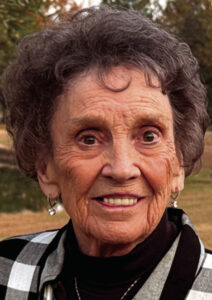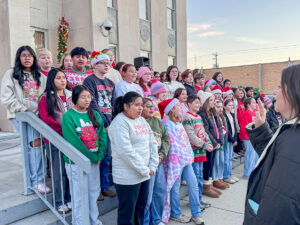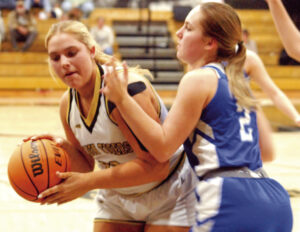Fall armyworms threaten local properties
As summer fades into fall, the Franklin County Extension is getting numerous reports and questions about a perennial pest: the fall armyworm.
The Extension is sharing the following information so property owners can learn about the biology, damage and management of the fall armyworm, a reported annual pest on crops in the Southeast for more than 100 years.
Fall armyworms feed any time of the day and are generally easy to see. They are most notably seen “marching” in large numbers across lawns.
They often feed openly and conspicuously, sometimes during the day, making themselves relatively easy to spot.
Most armyworms are large caterpillars with long stripes lengthwise on the body and some type of netlike pattern on the head.
They attack a variety of plants, including turfgrasses, but seem to prefer well-fertilized and maintained bermudagrasses. Fall armyworms also attack fescue, ryegrass, bluegrass and bentgrass.
BIOLOGY
Fall armyworm caterpillars damage grass by chewing plant tissue. They are most active on turf in early morning or late afternoon/early evening, but they can feed any time of the day. On tall, un-mowed turf, fall armyworms are obvious when feeding on foliage during the day; however, on maintained turf that is mowed regularly, fall armyworm larvae spend the warmer hours of the day deep in the turf.
As the name indicates, fall armyworms usually appear in the late summer or early fall. Occasionally severe outbreaks occur as early as mid-April.
The adult fall armyworm is an ash-gray moth with a wingspan of about 1.5 inches. The front wings are smaller, with a mottled gray and brown color. The back wings are large, white in color, with a narrow, smoky brown edge.
Moths become active at twilight and may be seen at porch lights, if noticed at all. The moths feed on nectar and have an average lifespan of about 10 days.
The presence of moths does not always indicate an outbreak of larvae.
Female moths lay eggs on light-colored surfaces at night in masses of up to several hundred. The eggs are light gray and covered with grayish fuzz from the female’s body.
These masses darken with age, and the eggs hatch in two to four days.
All the eggs in a mass hatch about the same time, and the larvae will remain in the egg mass shortly after hatching. The tiny, light-colored, black-headed larvae then spin down to the turf on silken webs.
As they grow, their bodies darken, and noticeable stripes appear. When fully grown, larvae are 1.25-1.5 inches long and vary in color from light green to almost black, with several stripes along the body.
Armyworms are among the largest larvae found in turfgrass. The larger size and the presence of stripes can separate them from the various webworms that also occur in turfgrass.
The “face” is marked with a light- colored inverted “Y,” and the body segments have four spots each, with the spots on the posterior segment arranged in a square.
Development from egg to fully-grown larva requires about two or three weeks. At this point, larvae burrow into the soil and form pupae, from which moths emerge in about 10-14 days.
Because development can be two to four weeks, it is possible to have four or more generations per year.
Overwintering occurs in the pupal stage, but this stage cannot survive the winter in Alabama. Fall armyworms are permanent residents of central and south America and the extreme southern parts of Texas and Florida.
Populations that overwinter in southern Florida and Texas are the primary sources for fall armyworms in Alabama and the rest of North America. The fall armyworm moths, carried by air currents, make their way from Texas or Florida to Alabama each year.
Trapping suggests the arrival of moths in central Alabama is in April or May.
DAMAGE
Fall armyworm damage to turf can vary in appearance and severity, according grass type and maintenance practices. Fall armyworm larvae feed on many different plants, including vegetables, but prefer grasses and corn. They attack most cool and warm-season turfgrasses, and bermudagrass is the most common host.
NATURAL MANAGEMENT
The presence of birds and paper or red wasps can be one indication that turfgrass is infested with armyworms. Look for flocks of birds feeding consistently in turf areas or for holes pecked in the turf by birds.
Paper wasps fly and walk in infested turf looking for larvae. Once found, they grab the larvae, kill them and knead them into balls. The fall armyworm larvae are then fed to the wasp larvae.
If wasps or birds are present, inspect the turf for larvae or use a soap flush. If no larvae are visible on the grass, look in the turf for green pellets of frass – larval excrement – and larvae.
Some larvae may also be overcome by fire ants.
Soap flushes can be used to bring larvae to the top of the turf. To do a soap flush, mix 2 tablespoons of liquid dishwashing soap in 1 gallon of water. Using a watering can, pour the soapy water over a 1- to 2-square-foot area. The larvae, if present, will emerge from the soil or thatch.
This technique might also cause other insects, like sod webworms, other armyworms or mole crickets, to come to the surface, as well.
Check for signs of fall armyworm eggs on light-colored surfaces.
In urban areas, the light-colored undersides of leaves, metal gutters, fence posts and light-colored lawn furniture are common sites.
On athletic fields, the goal posts, particularly those painted white or yellow, are usual egg-laying sites, especially the underside of the cross piece. Fall armyworm egg masses often cause the paint on these surfaces to chip.
CHEMICAL MANAGEMENT
If treatment is necessary, do it properly at the right time.
Properly checking an area allows you to determine the extent of an infestation. Birds, fire ants, wasps and other natural enemies consume fall armyworm eggs and larvae. The action of natural enemies can reduce the numbers of armyworms before noticeable damage occurs.
Some turf areas, particularly bermudagrass, can recover with proper maintenance.
The decision to treat for fall armyworms depends on the kind and condition of the turf and what purpose the turf serves. Although there are several overlapping generations of fall armyworms in most years, only one generation usually outbreaks in turfgrass per year.
If mowing is needed, do it before treatment, early or late in the day. Mowing can mechanically destroy a few larvae, but it also reduces the depth of the turf the insecticide must penetrate. Granular insecticides can also be moved or removed by mowing equipment that catches clippings.
Light irrigation several hours before treatment can help increase larval activity near the turf surface.
Apply insecticides early or late in the day because fall armyworm larvae are most active on turf at these times.
On established, thick turf, apply sprays in a minimum of 1 gallon per 1,000 square feet. In general, if insecticides are sprayed, irrigation is usually stopped for 24 hours.
The label is the best source of information for application conditions and post-treatment irrigation procedures.
Chemical controls for fall armyworms in lawns are often not specifically labeled for fall armyworms but are labeled for caterpillar pests of turfgrass. Most products available to homeowners are granular formulation of synthetic pyrethroids. Granular formulations and the ready-to-use spray formulations do not require mixing, dilution or spray equipment. Concentrated formulations require a tank sprayer and proper dilution of the product according to the label.
For more information, contact the Franklin County Extension.










